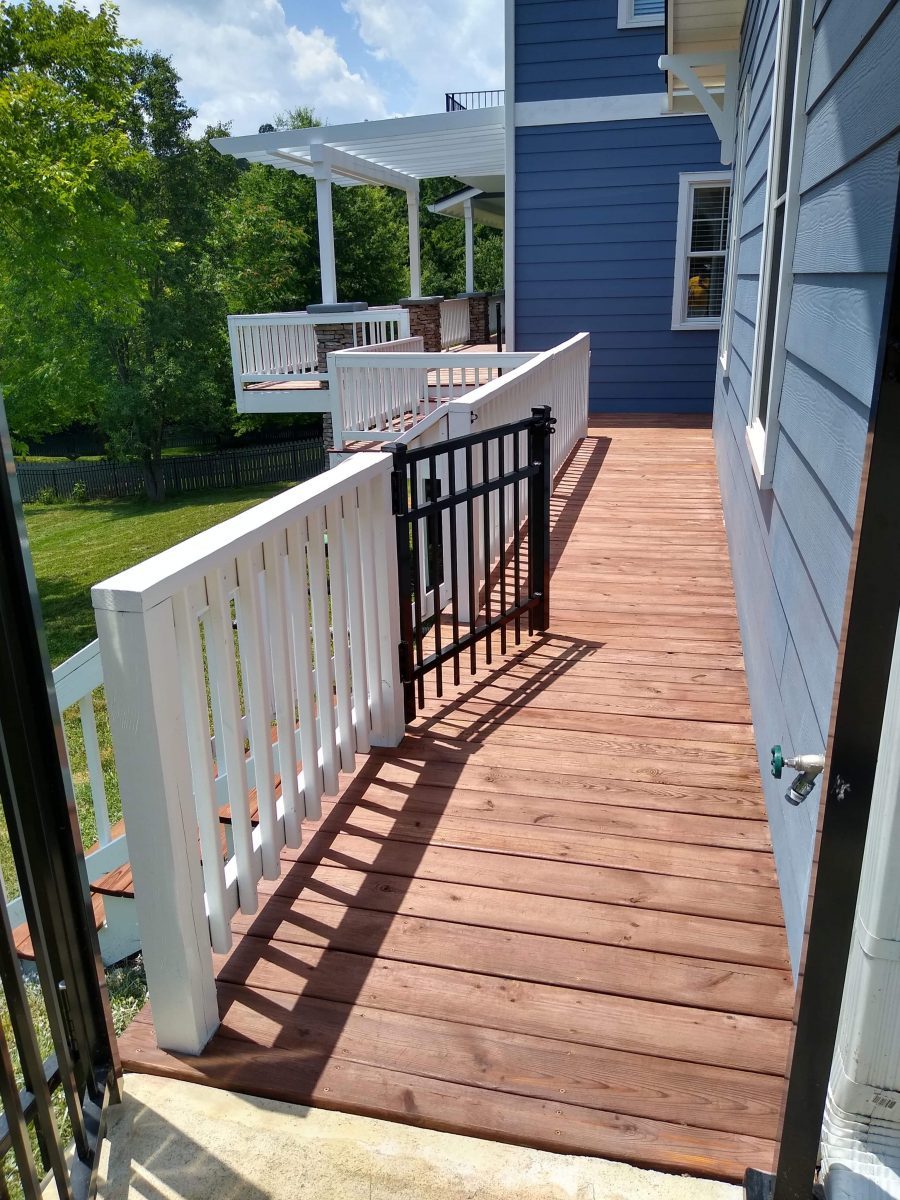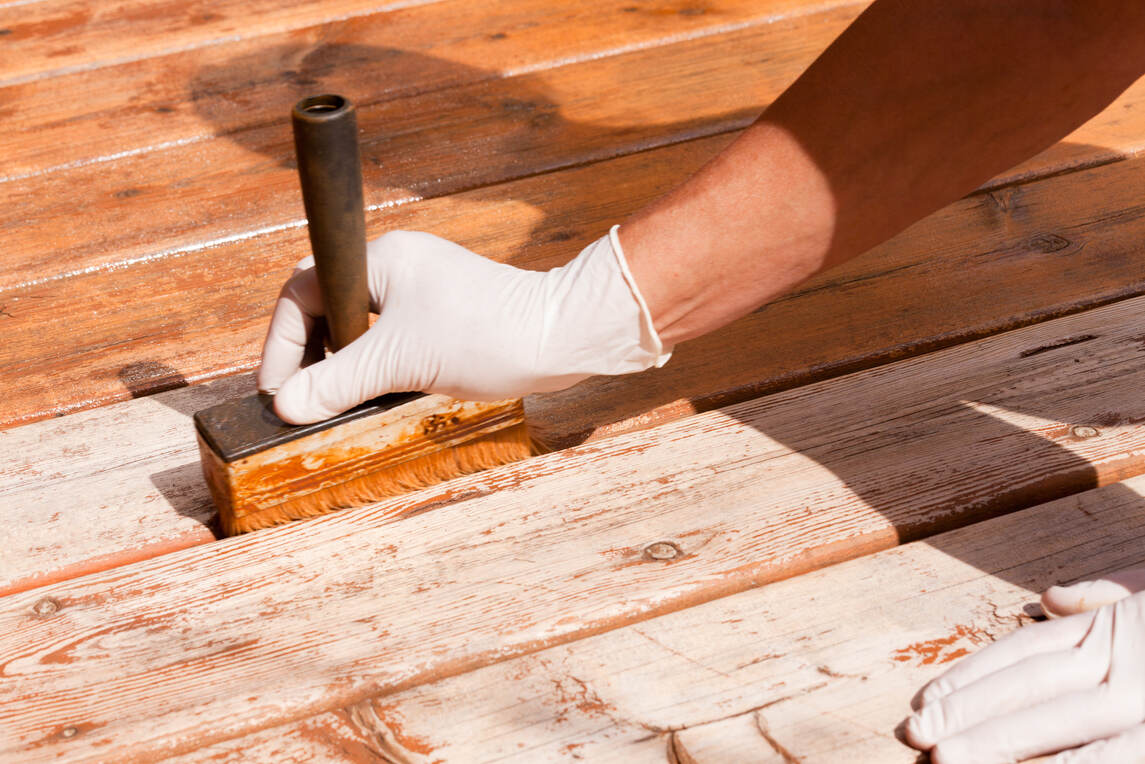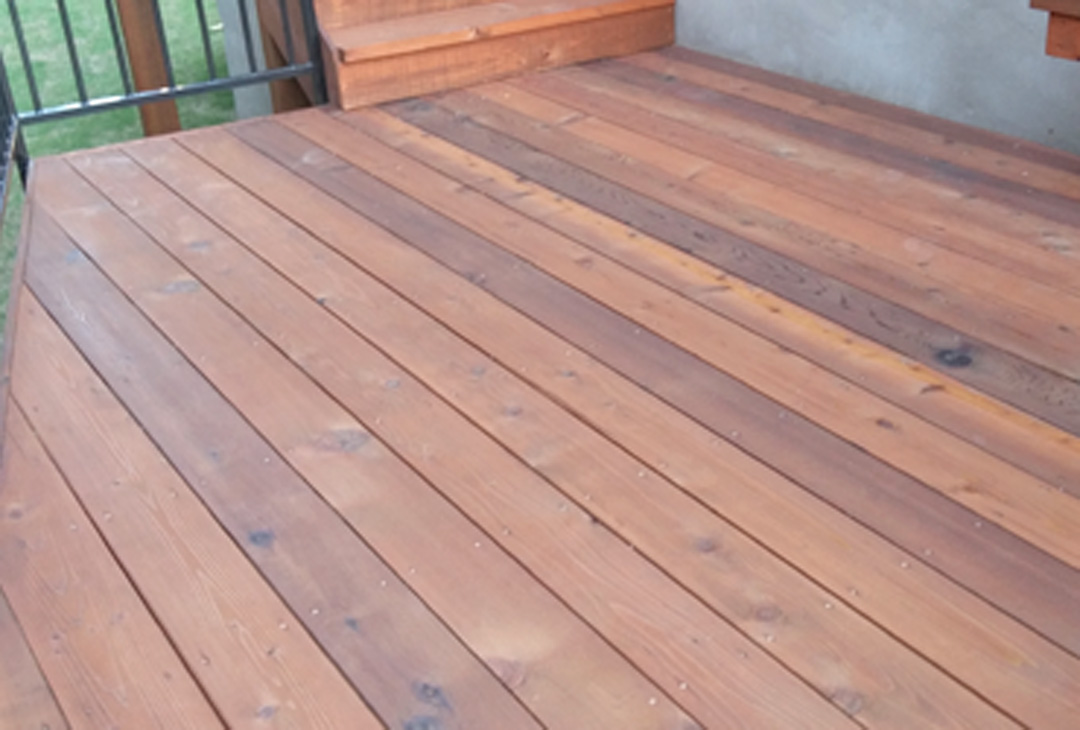Deck Staining 101: Everything You Need to Know for a DIY Project
From preparing the deck surface to choosing the ideal type of discolor and grasping the application strategies, each step plays a critical role in accomplishing a specialist finish. Join us as we unwind the important standards and expert tips for grasping the art of deck discoloration, ensuring a successful Do it yourself project that will leave your deck looking remarkable.
Value of Deck Discoloration
Deck staining is a necessary upkeep task that maintains the longevity and appearance of outside wood structures. Wooden decks are regularly revealed to harsh aspects such as sunshine, rainfall, snow, and foot website traffic, every one of which can lead to damage in time. By using a coat of stain to the deck's surface area, you create a safety barrier that helps prevent moisture penetration, UV damage, and rotting of the wood. This not only prolongs the life expectancy of the deck yet also preserves its visual charm.
It gives a possibility to customize the look of the deck by selecting from a variety of stain colors and coatings. In essence, routine deck staining is a straightforward yet efficient means to ensure your deck continues to be structurally sound and aesthetically pleasing for years to come.
Deck Preparation Tips

After cleaning and repairing, sanding the deck is essential to smooth out harsh surface areas and open the timber's pores to better absorb the discolor. Make use of a coarse-grit sandpaper followed by a finer grit for a refined finish. When the deck is clean, dry, and smooth, shield any kind of nearby plants, furniture, or surfaces with a ground cloth before applying the deck stain. Following these preparation steps carefully will lead to a perfectly tarnished deck that is well-protected and cosmetically pleasing.
Selecting the Right Stain
Selecting the appropriate tarnish for your deck is a critical choice that straight affects both its appearance and sturdiness. When choosing the right tarnish, there are a number of elements to think about to ensure an effective do it yourself job.
To start with, you need to decide in between clear, semi-transparent, and solid discolorations. Transparent discolorations allow the all-natural grain of the wood to reveal through however supply very little defense against UV rays and dampness. Semi-transparent stains give a compromise between shade and protection, while strong stains provide one of the most protection however cover the wood grain.
Next, take into consideration the type of timber your deck is constructed from, as different spots function better with specific timber species. Cedar and redwood decks usually look ideal with a clear or semi-transparent tarnish to highlight their natural elegance. Pressure-treated timber may take advantage of a strong stain to hide imperfections.
Last but not least, element in the environment in your location. Decide for a stain with UV defense and resistance to extreme weather condition conditions if you experience rough winters or intense sunshine. By meticulously considering these aspects, you can select a tarnish that improves your deck's visual appeals and longevity.

Using Discoloration Correctly
When thinking about the application of discolor to your deck, it is vital to pay close attention to the certain features of the stain selected and exactly how it engages with the kind of timber and environmental problems formerly mulled over. Prior to starting the discoloration process, make sure that the deck surface is tidy, dry, and without any kind of previous coverings or debris. It is recommended to evaluate the selected stain on a small inconspicuous area of the deck to ensure compatibility and achieve the desired color and coating.
Apply the stain along the size of the deck boards to stop uneven merging - fence staining near me. It is crucial to function with the wood grain to boost the natural elegance of the deck and enable for far better infiltration of the stain.
Upkeep and Care Tips

One more crucial element of deck maintenance is securing it from the components. Think about using a waterproof sealant every few years to protect the timber from dampness damages. Additionally, attending to any kind of mold and mildew or mildew quickly is vital to stop them from creating structural harm to your deck. Regularly trimming neighboring foliage can additionally protect against leaves and branches from accumulating on your deck and triggering prospective damages.
Final Thought
Finally, deck discoloration is a crucial action in preserving the look and long life of your outside area. By correctly preparing the deck, choosing the appropriate tarnish, applying it properly, and following upkeep pointers, you can guarantee a lovely and durable surface that will last for several years to find. Remember to frequently evaluate and care for your tarnished deck to maintain it looking its finest.
Join us as we untangle the important guidelines and insider tips for mastering the art of deck staining, making certain a successful DIY project that will leave your deck looking impeccable. - deck cleaning nashville
In significance, visit this page normal deck discoloration is a simple yet effective means to ensure your deck remains structurally audio and aesthetically pleasing for years to come.
When the this content deck is tidy, dry, and smooth, safeguard any type of neighboring plants, furniture, or surfaces with a decline towel before using the deck stain.Following, think about the type of wood your deck is made of, as different spots work much better with certain timber species.When considering the application of stain to your deck, it is vital to pay close interest to the certain qualities of the discolor picked and how it engages with the type of timber and ecological conditions formerly deliberated.